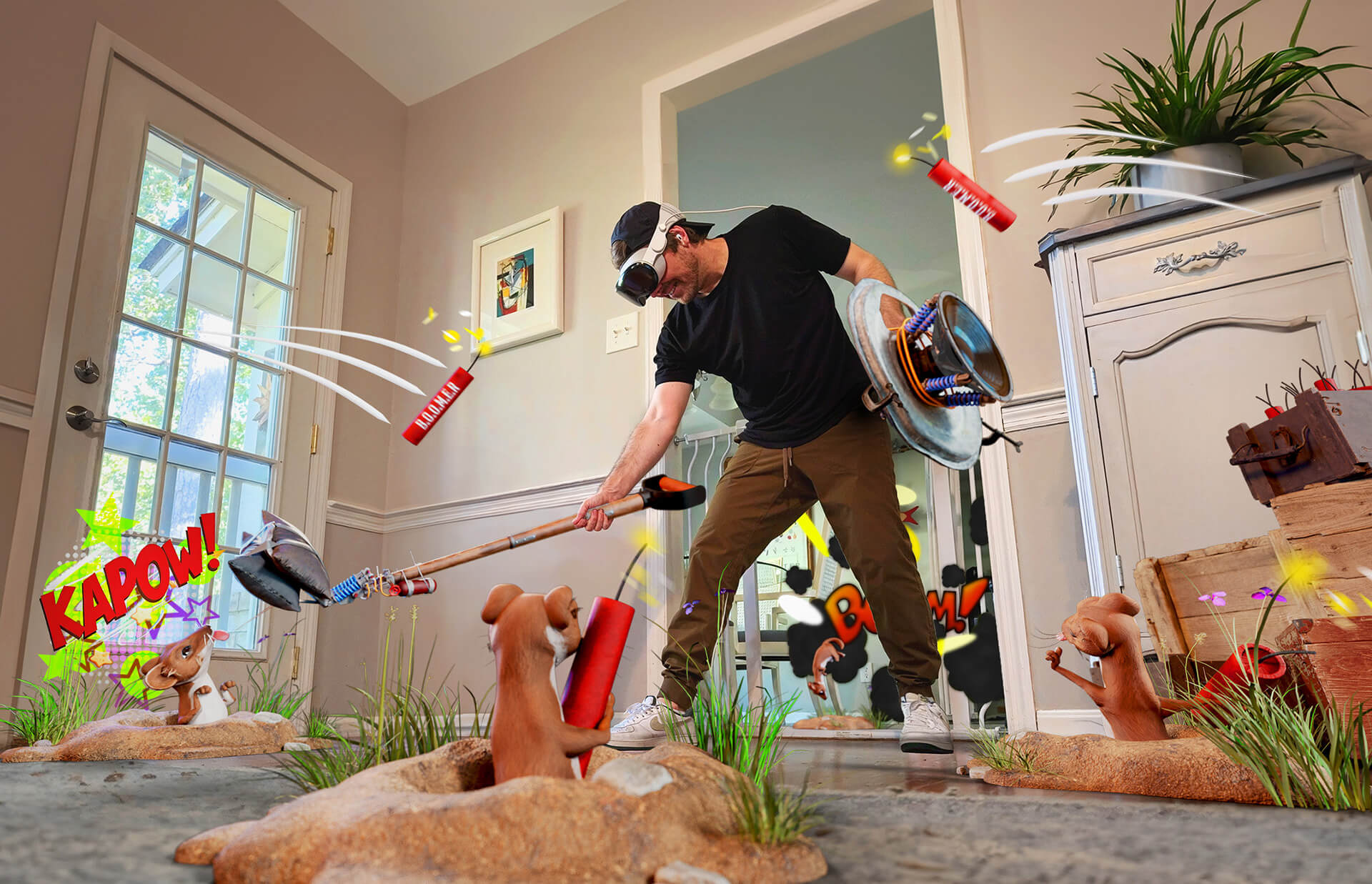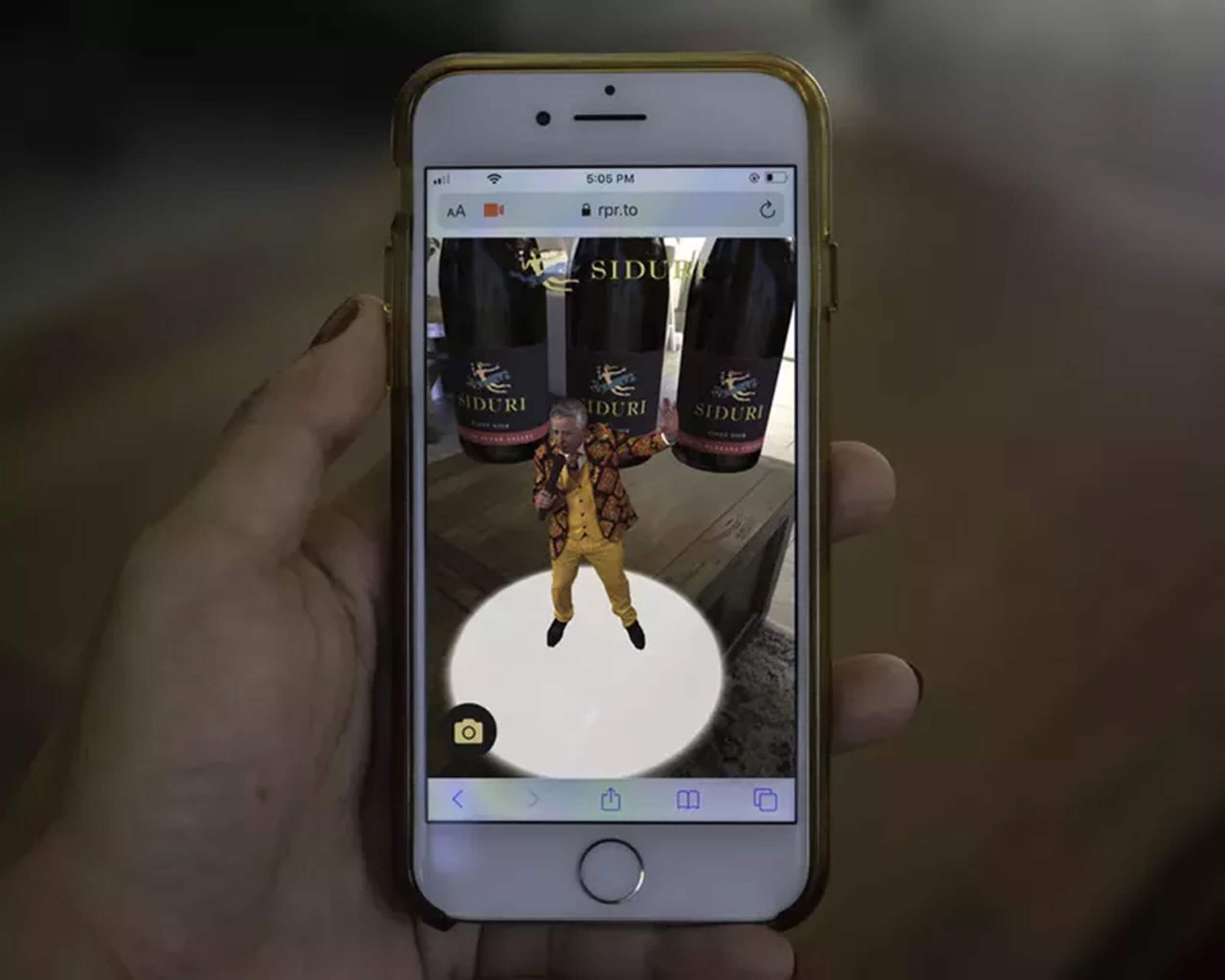Augmented reality (AR) is a technology that has struggled to shed its ‘gimmicky’ tag and breakthrough from its niche as a ‘cool tech’ (think mobile gaming sensation, Pokémon Go) and provide benefits and experiences that are more meaningful in its applications in society. AR has, in recent years, however, been increasingly used in everything from entertainment and online commerce to healthcare and education and fast becoming an integral business tool.
Ever since the technology was unveiled, AR has been touted as the ‘next big thing’ and it’s finally showing its prowess as a powerful enabler that more purposefully impacts business operations. This is reflected in the figures, with one study stating that 800,000 people use AR and projects that’ll impact as many as 23 million jobs worldwide within the next 15 years. There are forecasts that the AR market value will hit $50 billion by 2024.
The world is currently in the grip of a devastating pandemic that has wreaked havoc on billions of lives and livelihoods. The benefits of AR technology to drive recovery efforts in healthcare, education, and tourism – effectively shut down during the ongoing pandemic – is huge. COVID-19 has further brought home how failing to digitize value across business chains has severely disrupted industries worldwide.
Many experts believe AR is just at the beginning of its evolution as a productive extension of our everyday activities and has the potential to transform almost every sector going forward. It will fundamentally change how we learn, make decisions, and interact with the physical world. “It will also change how enterprises serve customers, train employees, design and create products, and manage their value chains, and, ultimately, how they compete,” notes the Harvard Business Review.
Augmented reality’s exponential growth forecast is due to its ability to remotely immerse, connect, and interact. Many sectors have already benefited from the technology and will continue to do so as adopters find new and innovative ways of leveraging the tech. For businesses, the consideration should not be: Will we embrace AR, but rather, how soon can we immerse ourselves into this exciting immersive tech to help our company grow?
Let’s chat
Not sure where to start? Book a free strategy call with us to get started! No strings attached.

Efficient Product Development Using Augmented Reality
AR can significantly improve product development across all industries. The technology features a range of benefits allowing for early-stage amendments, risk management, improved quality assurance, reduced construction efforts, and most importantly, visualization. These benefits translate to a more efficient product development process, speeding up time-to-market while driving down costs.
The Power of Visualization
AR technology allows you to bring a concept into a reality that is otherwise imagined, inaccessible or difficult to grasp. Visualization underpins a product’s design process. In a traditional design setting, products and user experience are developed through sketching and digital modeling. However, no matter how detailed a design is, it can never truly capture the realities of scale and context.
AR is a powerful visualization tool and the technology’s immersive nature allows for both a true-scale and contextual simulation of a product. This enables developers to quite literally step inside their designs and examine them in 3D from all angles. They can view it remotely, walk around it, integrate it into the different surroundings, and make real-time changes.
Augmented reality’s enhanced visualization capabilities also allow for greater collaboration during the development process, meaning anyone involved can view a universally understandable model of the product. The 3D nature and real-life representations that AR generate mean that even non-technical people can understand development designs. This enables all stakeholders to envision the product and give feedback.
Keep up to date
Sign up to our newsletter for exclusive updates and content, delivered directly to your inbox.
Better Recruitment and Training With AR
Business augmented reality can also improve the efficiency of the recruitment and training process. Its ability to remotely simulate different environments can be used to create screening and training processes that empower businesses to both hire the best people and train them effectively.
Recruitment
AR allows employers to develop a more efficient recruitment process by creating a simulated setting of the real world. Applicants work through this experience, demonstrating their real-life skills and work dynamics. This gives recruiters the ability to assess a performance set in a digital render of the actual workplace. This ‘real-world’ assessment improves recruitment efficiency because it offers insights based on demonstrated ability instead of hyped-up resume credentials and superficial interviews.
This real-life assessment also works for the benefit of the applicants. Business augmented reality recruitment allows potential recruits to experience the workplace remotely. This enables them to gauge if the environment is a good fit and whether they can contribute and grow therein.
Training
The technology gives businesses new tools to enhance their training processes. For example, AR experiences can guide trainees through equipment handling and company SOPs. The rich immersive nature of AR enables heightens information retention rates and effectively eliminates the need to rely on static slides and cumbersome manuals. A study by CISCO showed that hands-on experience such as with AR increased installation efficiency by 30% and first-use accuracy by 90%.
AR-based training can further gather real-time feedback from users. This feature allows for a tailored experience for every trainee. The technology is also replicable, saving on costs and time. This eliminates the need for expensive instructors whenever new recruits need to be trained.
Boost Sales and Marketing With AR Technology
Sales and Marketing departments are where Augmented Reality (AR) is most frequently used. Face filters, portals, try-on’s, marker-based and markerless experiences are just a few of the rich and near limitless opportunities in these sectors. AR offers marketers an incredibly immersive and interactive tool that can help drive engagements and conversions.
Sales
Augmented reality has immense power to influence a customer’s buying decisions. Herschel Supply Co, for example, reported that by using AR for furniture visualization, they recorded a 152% increase in revenue per visit. This incredible revenue growth is because customers are more likely to make a purchase if they are able to connect with a product, which is a big reason consumers are demanding AR from retail. AR technology is designed to facilitate deep interaction and visualization, eliminating barriers that often impede online sales.
Marketing
Augmented reality in marketing is growing at an exponential rate. Industry analysis firm ARtillery Intelligence has released data showing that global AR advertising revenue grew from half a billion dollars in 2019 to $1.41 billion in 2020. This number is expected to rocket to $8+ billion by the end of 2024.
It’s easy to understand this adoption explosion when you consider the impact of AR technology on marketing. Augmented reality makes it easier to send marketing messages, producing average dwell times of 75 seconds – 4x longer than with video. The ability of AR to facilitate an emotional connection with customers is the main driver of this improved dwell time.
Integrating AR experiences add a new dimension to traditional marketing materials such as print and out-of-home ads. For instance, a person can scan a simple product label to launch an interactive experience such as with the Siduri Wines Holographic Experience by Rock Paper Reality.
Web-based augmented reality in particular has massive reach. How massive? Well, over a billion devices across the globe. This extends the reach of marketers beyond platforms such as Instagram and Facebook to every person with a smart device.

Siduri Wines created an immersive WebAR experience that shared information and culture through a holographic version of their founder
Every Organization Needs an AR Strategy… RPR Can Get You There
Augmented reality, the set of technologies that superimposes digital data and images on physical objects and environments, is rapidly closing the gap between the real and digital worlds. By putting information directly into the context in which users apply the technology, it expands their ability to absorb and act on it.
Visionary organizations have already implemented AR in product development, manufacturing, logistics, marketing, service, and training—registering huge gains in quality and productivity in the process. Partnering with industry leader Rock Paper Reality (RPR) can get your business there too, and fast.
With over 12 years at the cutting-edge of this technology, we have unparalleled experience and expertise in augmented reality applications and are uniquely positioned to develop industry-leading AR strategies for your business. Whether you’re focused on product development, training, or sales and marketing, contact RPR and make your AR vision a reality, today.
